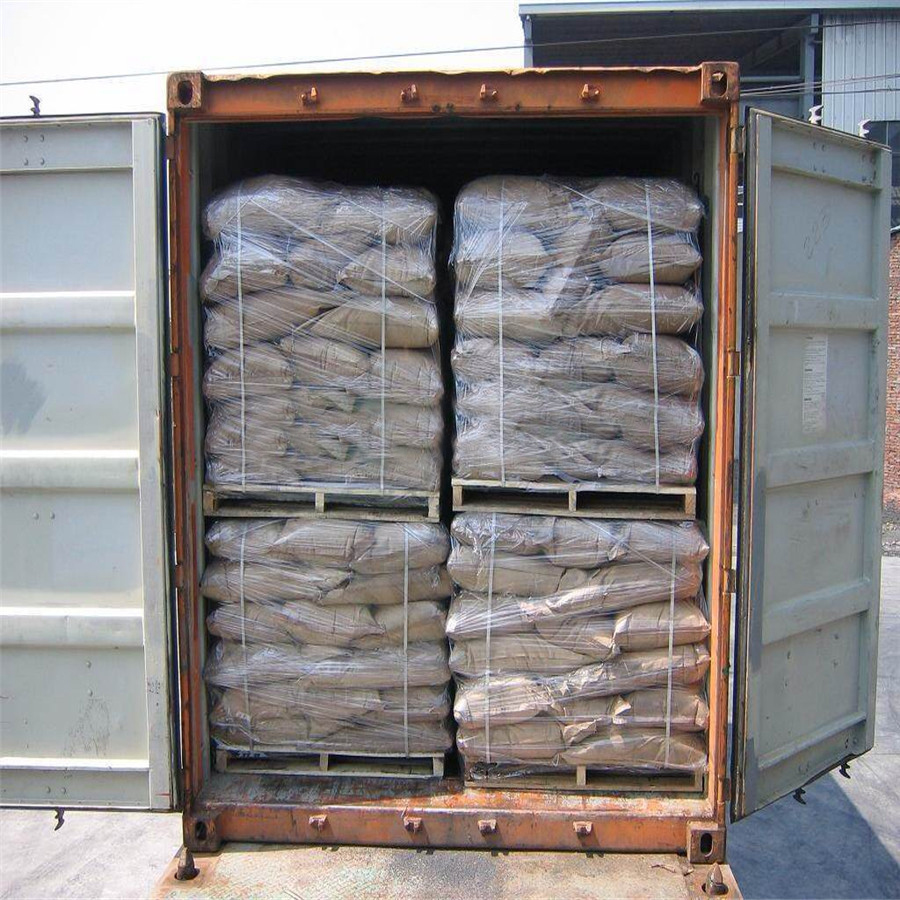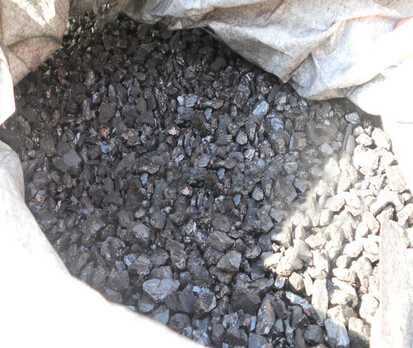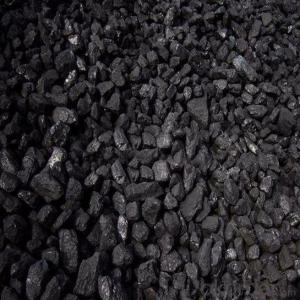Calcined anthracite coal Recarburizer 90%-98.5%for Iron casting
- Loading Port:
- Dalian
- Payment Terms:
- TT OR LC
- Min Order Qty:
- 10 m.t
- Supply Capability:
- 500000 m.t/month
OKorder Service Pledge
OKorder Financial Service
You Might Also Like
Specifications of Calcined anthracite coal:
Calcined anthracite coal/Recarburizer 90%-98.5%for Iron casting
C:90%min
S:0.36%max
Mositure:0.6%max
Anthracite Coal for more than 10 years
Data Sheet:
Fixed carbon | 90%min |
Ash content | 8.0%max |
Vol . Matter | 2.0%max |
Sulphur content | 0.36%max |
Moisture content | 0.6%max |
Size | As per customers' requirement |
packing | 25kg paper bag on the pallet or 10kg paper bag shrieked wrapped on the pallet or 1MT big bag or other packing as required |
delivery time | 20days or depends on the order quantity |
Supply ability | 3000 Metric Ton/Metric Tons / Month |
Payment terms | L/C at sight or T/T |
Size: 1-4mm, 1-5mm, 3-8mm, 8-20mm (as per customers’ requirement)
Usage: Gas Calcined Anthracite/GCA is carbon raiser, widely used in steel-making, metallurgical.


- Q:How can individuals reduce their carbon footprint?
- There are several actions individuals can take to reduce their carbon footprint and contribute to a more sustainable future. Here are some effective ways to achieve this: 1. Reduce energy consumption: Conserving energy is crucial in reducing carbon emissions. Switch to energy-efficient appliances, turn off lights when not in use, unplug electronics when not in use, and use natural lighting whenever possible. Additionally, adjusting thermostats to energy-saving temperatures and using programmable thermostats can significantly reduce energy consumption. 2. Use renewable energy sources: Transitioning to renewable energy sources, such as solar or wind power, can greatly reduce carbon emissions. Install solar panels on rooftops, or consider purchasing green energy from utility companies that offer renewable options. 3. Reduce water usage: Conserving water indirectly helps reduce energy consumption and carbon emissions. Fix leaky faucets, take shorter showers, install water-saving fixtures, and collect rainwater for outdoor use. Also, consider using drought-resistant landscaping to reduce water usage for gardening. 4. Consume consciously: Make sustainable choices when purchasing products. Opt for durable and long-lasting items, repair and reuse instead of replacing, and prioritize products made from recycled or sustainable materials. Additionally, support local and sustainable businesses that prioritize eco-friendly practices. 5. Minimize transportation emissions: Reduce reliance on private vehicles by opting for public transportation, carpooling, biking, or walking whenever possible. If owning a car is necessary, choose electric or hybrid vehicles. Regular maintenance, proper tire inflation, and avoiding unnecessary idling all contribute to reducing transportation emissions. 6. Adopt a plant-based diet: The food industry has a significant carbon footprint, especially due to livestock production. Reducing meat consumption or adopting a plant-based diet can greatly reduce carbon emissions and also offer health benefits. If going completely plant-based is not feasible, try incorporating more vegetarian or vegan meals into your diet. 7. Reduce waste generation: Waste contributes to greenhouse gas emissions, so reducing waste is essential. Opt for products with minimal packaging, recycle diligently, compost organic waste, and avoid single-use plastics. Reduce food waste by planning meals, buying only what is needed, and properly storing leftovers. 8. Support environmental initiatives and organizations: Engage with local and global organizations working towards environmental conservation. Participate in community clean-ups, support reforestation efforts, and advocate for sustainable practices in your workplace and community. By implementing these strategies in our daily lives, individuals can make a significant impact in reducing their carbon footprint and help combat climate change. It is important to remember that every small action matters, and collectively, we can create a sustainable future for generations to come.
- Q:How to test aldehyde group and carbon carbon double bond in acrolein
- then the bromine test double bonds, because the aldehyde will affect the bond detection, and will not affect the detection of double bond of carboxyl.
- Q:How is carbon formed?
- Carbon is formed through various natural processes, primarily through the cycle of life and death of living organisms. The formation of carbon starts with the process of photosynthesis in plants, where they use sunlight, water, and carbon dioxide from the atmosphere to produce glucose. This glucose is then converted into other organic molecules, such as carbohydrates, fats, and proteins, which form the fundamental building blocks of all living organisms. When plants and animals die, their remains and waste products are broken down by decomposers like fungi and bacteria. During this decomposition process, carbon is released back into the environment in the form of carbon dioxide or methane gas. Additionally, some of the organic matter may become buried under layers of sediment, where it undergoes a process called fossilization over millions of years. This fossilization process, combined with heat and pressure, transforms the organic matter into fossil fuels such as coal, oil, and natural gas, which are rich sources of carbon. Apart from the biological processes, carbon can also form through geological processes. Volcanic eruptions release carbon dioxide into the atmosphere, and over long periods of time, this carbon dioxide can dissolve in water and combine with minerals to form rocks like limestone. These rocks act as a carbon sink, storing large amounts of carbon over geologic timescales. Overall, carbon is formed and cycled through a complex interplay of biological and geological processes, playing a crucial role in maintaining the balance of carbon in the Earth's atmosphere and supporting life as we know it.
- Q:Is there a line cutting of carbon fibers?
- The principle of ultrasonic cutting machine is completely different from traditional cutting. It is the use of ultrasonic energy, will be cut materials local high-speed vibration, so as to achieve the purpose of cutting materials.Water cutting is the formation of water through high pressure jet, for carbon fiber board also need to add hard abrasive in water, called water jet cuttingFor complete curing of the carbon fiber composite plate, if there is no special requirements, with diamond grinding tools can also cut the general. I don't know what you're asking for.Carbon fiber composite cutting methods are many, and laser cutting, etc., need to be selected according to specific circumstances and requirements.
- Q:What are the long-term effects of increased carbon emissions on ecosystems?
- Ecosystems are significantly impacted by the increase in carbon emissions, with climate change being one of the most notable consequences. Carbon dioxide, a greenhouse gas, traps heat in the atmosphere and leads to rising temperatures, changes in weather patterns, and more frequent and intense extreme weather events like hurricanes, droughts, and wildfires. These climate changes have numerous negative effects on ecosystems. For example, the rising temperatures directly affect the behavior and physiology of plants and animals. Many species have specific temperature requirements for their survival, feeding, and reproduction. Even slight changes in temperature can disrupt their life cycles, causing population declines or even extinctions. Moreover, the increase in carbon emissions contributes to ocean acidification. This process occurs when excess carbon dioxide in the atmosphere dissolves in seawater, forming carbonic acid. The acidification has devastating consequences for marine ecosystems, especially for coral reefs and shell-forming organisms such as oysters and clams. It weakens their structures made of calcium carbonate and hinders their growth and reproduction, ultimately leading to their decline. Furthermore, carbon emissions influence the distribution and composition of plant communities. Carbon dioxide is essential for photosynthesis, and elevated levels can enhance plant growth and productivity. However, this can also result in changes in plant composition and the competitive balance between species, favoring certain fast-growing species at the expense of others. This disruption can impact the intricate relationships between plants, pollinators, herbivores, and other organisms, affecting the entire food web. Additionally, increased carbon emissions contribute to the loss of biodiversity. Many species are highly specialized and adapted to specific environmental conditions. As habitats change due to climate change, some species may struggle to adapt or find suitable alternatives, leading to declines or local extinctions. This loss of biodiversity can have cascading effects throughout ecosystems, disrupting ecological processes and reducing the resilience and stability of entire ecosystems. In conclusion, the increase in carbon emissions has far-reaching and harmful long-term effects on ecosystems. It causes climate change, ocean acidification, alters plant communities, and drives biodiversity loss. It is crucial to reduce carbon emissions and mitigate climate change in order to protect and preserve the health and functioning of ecosystems for future generations.
- Q:What are the consequences of increased carbon emissions on global trade?
- Global trade can be significantly affected by the increased carbon emissions. One immediate impact is the potential for countries and international agreements to impose stricter environmental regulations and carbon pricing mechanisms. This can result in higher costs for industries heavily reliant on carbon-intensive activities like manufacturing and transportation. Consequently, companies may experience increased production costs, which can be transferred to consumers through higher prices for goods and services. This can negatively impact global trade, as higher costs can reduce demand and hinder international competitiveness. Moreover, industries failing to comply with environmental regulations or carbon reduction targets may face trade barriers or sanctions, further limiting their participation in global trade. Another consequence of increased carbon emissions is the possibility of climate change-related disruptions to supply chains. Infrastructure can be damaged, transportation routes can be disrupted, and the availability and quality of resources can be affected due to rising temperatures, extreme weather events, and sea-level rise. This can cause delays in production and shipping, increased transportation costs, and a higher risk of interruptions in the supply chain. These disruptions can have far-reaching effects on global trade, impacting the flow of goods, services, and investments across borders. Additionally, increased carbon emissions contribute to global warming, which can have long-term implications for agricultural productivity and food security. Changes in temperature and precipitation patterns can result in crop failures, reduced yields, and shifts in agricultural production regions. This can disrupt global food supply chains, leading to price volatility and affecting trade flows. It may even exacerbate food shortages and inequalities. In conclusion, increased carbon emissions have multiple consequences for global trade. Stricter environmental regulations and carbon pricing can raise costs for industries, potentially reducing their competitiveness. Climate change-related disruptions to supply chains can cause delays, increased costs, and interruptions in trade. Furthermore, the impact of global warming on agricultural productivity can significantly affect food security and trade in agricultural commodities.
- Q:What are the different forms of carbon?
- Carbon exists in several different forms, known as allotropes. The most common forms of carbon include diamond, graphite, and amorphous carbon. Diamond is the hardest known natural substance and consists of carbon atoms arranged in a crystal lattice structure. It has a high refractive index and is often used in jewelry due to its brilliance and clarity. Graphite, on the other hand, has a layered structure where carbon atoms are arranged in sheets. It is a soft and slippery material, commonly used in pencils and lubricants. Graphite is also a good conductor of electricity, making it suitable for applications in batteries and electrodes. Amorphous carbon refers to a group of carbon materials that lack a well-defined crystal structure. Examples of amorphous carbon include charcoal, soot, and activated carbon. These forms of carbon have diverse applications, such as in water and air purification, as well as in the manufacturing of electrodes and pigments. Other forms of carbon exist as well, such as fullerenes and carbon nanotubes, which have unique properties and are extensively studied for their potential applications in various fields, including nanotechnology and electronics. In summary, carbon can take on different forms depending on its atomic arrangement, resulting in a range of materials with distinct physical and chemical properties. These forms of carbon find applications in various industries and are vital for our everyday lives.
- Q:Where are carbon fiber sheets and carbon fiber sheets used?
- Carbon reinforced materials, carbon fiber cloth is mainly used for concrete beam flexural and shear strengthening, flexural reinforcement, column reinforcement plate; plant, buildings, schools, hospitals and other industrial and civil building reinforcement; Luqiao, water conservancy, nuclear power and energy infrastructure reinforcement.Carbon fiber board is mainly used for concrete structure plate and beam repairing and reinforcing plate; opening wall and surrounding reinforcement; the wooden building beam reinforcement; reinforced bridge, bridge pier, truss; tunnel, cable pipeline repairing and reinforcing.
- Q:What are the consequences of increased carbon emissions on educational systems?
- Increased carbon emissions can have several consequences on educational systems. Firstly, the health impacts of pollution caused by carbon emissions can lead to increased absenteeism among students and teachers, affecting the overall learning environment. Additionally, extreme weather events linked to climate change, such as hurricanes or heatwaves, can disrupt educational infrastructure, leading to school closures and disruptions in academic schedules. Moreover, the need to address climate change and its impacts may require educational institutions to allocate resources and curriculum time to climate-related topics, potentially diverting attention and resources from other subjects. Finally, the long-term consequences of climate change, such as rising sea levels or increased natural disasters, may force the relocation or rebuilding of educational facilities, causing significant disruptions to students' education.
- Q:What are the consequences of increased carbon emissions on forest ecosystems?
- Increased carbon emissions have significant consequences on forest ecosystems. One of the most notable impacts is the alteration of the climate and weather patterns. The excessive carbon dioxide in the atmosphere traps heat, leading to global warming. This rise in temperature can disrupt the delicate balance of forest ecosystems. Warmer temperatures can cause shifts in the distribution and composition of tree species, as some may struggle to adapt to the changing conditions. Another consequence of increased carbon emissions is the acidification of rainwater. When carbon dioxide combines with water vapor, it forms carbonic acid, which can fall as acid rain. Acid rain has detrimental effects on forest ecosystems, as it leaches important nutrients from the soil and damages tree leaves and other vegetation. This can weaken the overall health of the forest and make them more susceptible to diseases and pests. Furthermore, increased carbon emissions contribute to the intensification of wildfires. Higher temperatures and drier conditions provide the perfect environment for fires to spread and become more frequent. Forests that have evolved to withstand natural fire regimes may struggle to cope with the increased intensity and frequency of these fires. This can lead to the loss of biodiversity, destruction of habitat, and long-term degradation of forest ecosystems. Lastly, increased carbon emissions contribute to the phenomenon known as ocean acidification, where excess carbon dioxide is absorbed by the oceans. This acidification can affect the health of coastal and marine ecosystems, which are intricately connected to forest ecosystems. Many forest ecosystems, such as mangroves and salt marshes, provide vital nursery habitats for marine species. If these forest ecosystems decline due to carbon emissions, it can have cascading effects on the health and productivity of coastal and marine ecosystems. Overall, increased carbon emissions have far-reaching consequences on forest ecosystems. It alters climate patterns, causes acid rain, intensifies wildfires, and affects coastal and marine ecosystems. These impacts not only harm the trees and vegetation within the forests but also disrupt the delicate balance of the entire ecosystem, leading to loss of biodiversity and long-term degradation. It is crucial to mitigate carbon emissions and promote sustainable practices to minimize these consequences and preserve the health and integrity of forest ecosystems.
1. Manufacturer Overview |
|
|---|---|
| Location | |
| Year Established | |
| Annual Output Value | |
| Main Markets | |
| Company Certifications | |
2. Manufacturer Certificates |
|
|---|---|
| a) Certification Name | |
| Range | |
| Reference | |
| Validity Period | |
3. Manufacturer Capability |
|
|---|---|
| a)Trade Capacity | |
| Nearest Port | |
| Export Percentage | |
| No.of Employees in Trade Department | |
| Language Spoken: | |
| b)Factory Information | |
| Factory Size: | |
| No. of Production Lines | |
| Contract Manufacturing | |
| Product Price Range | |
Send your message to us
Calcined anthracite coal Recarburizer 90%-98.5%for Iron casting
- Loading Port:
- Dalian
- Payment Terms:
- TT OR LC
- Min Order Qty:
- 10 m.t
- Supply Capability:
- 500000 m.t/month
OKorder Service Pledge
OKorder Financial Service
Similar products
New products
Hot products
Hot Searches
Related keywords
































